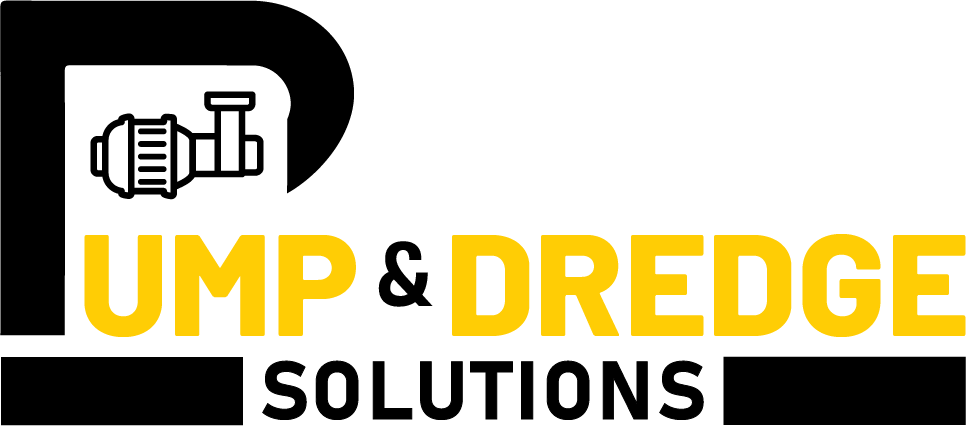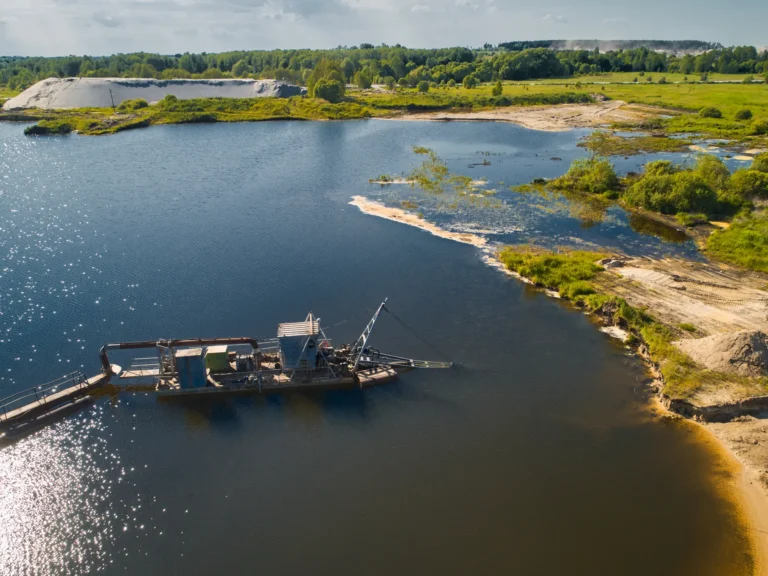Dredging plays a crucial role in maintaining navigable waterways and supporting a wide range of infrastructure projects. Whether it’s ensuring the safe passage of ships through busy ports, managing sediment in reservoirs, or preparing construction sites, dredging is an essential activity in many industries. However, dredging operations are often complex and challenging, with potential issues ranging from sediment management to environmental concerns. If not managed properly, these challenges can lead to project delays, cost overruns, and even regulatory hurdles.
Effective dredging methods tailored to each project’s specific needs are essential to overcoming these challenges and ensuring successful project execution. This article will explore several key dredging techniques and best practices that can help streamline operations, minimize environmental impact, and achieve project goals efficiently.
II. Understanding Dredging and Its Importance
A. Definition and Purpose of Dredging
Dredging is the process of removing sediment, debris, or other materials from the bottom of rivers, lakes, harbors, and other bodies of water. This process is critical for maintaining the depth and width of waterways, ensuring they remain navigable for vessels. Beyond navigation, dredging also supports various industries by preparing sites for construction, reclaiming land, and managing environmental issues such as pollution or erosion. Different dredging methods and dredging techniques are employed depending on the specific requirements of the project, ensuring the most effective approach is used for the task at hand.
Key applications of dredging methods and dredging techniques include maintaining shipping channels, preparing foundations for bridges and offshore structures, and restoring wetlands or other natural habitats. Dredging is also vital in flood management, where it helps to increase the capacity of rivers and reservoirs, thereby reducing the risk of flooding. By choosing the appropriate dredging methods and techniques, these critical tasks can be carried out efficiently and effectively.
B. Common Challenges in Dredging Projects
Dredging projects often face several challenges that can complicate execution. One of the most significant challenges is sediment management. The material dredged from waterways must be handled carefully to prevent contamination of the surrounding environment. This is especially important in areas where sediments are contaminated with pollutants, requiring specialized handling and disposal methods.
Environmental impact is another major concern. Dredging operations can disrupt local ecosystems, harm aquatic life, and alter natural habitats. Environmental protection regulations are stringent, and failure to comply can result in project delays or fines. Additionally, project delays are common in dredging due to unforeseen complications, such as weather conditions, equipment breakdowns, or unexpected site conditions.
To address these challenges, it is essential to implement effective dredging methods that can minimize risks, reduce environmental impact, and ensure that projects are completed on time and within budget.
III. Effective Dredging Methods
A. Hydraulic Dredging
Hydraulic dredging uses water to transport sediment from the dredging site to a disposal area. This technique involves suction dredgers, which draw sediment up through a pipe and pump it to a designated location, such as a containment area or a processing facility. Among the various dredging methods, hydraulic dredging stands out for its speed and efficiency, making it particularly effective for moving large volumes of fine, loose sediment over long distances.
Hydraulic dredging is often used in projects where the material being dredged is soft or sandy, such as in river maintenance or beach nourishment. This method is preferred when the goal is to move sediment quickly and efficiently, minimizing disruption to the surrounding area.
Best practices for implementing hydraulic dredging include ensuring that the equipment is properly calibrated for the specific conditions of the site and monitoring the operation closely to prevent over-dredging or sediment spillage. Additionally, it is important to manage the disposal area effectively to avoid environmental contamination. By adhering to these best practices, hydraulic dredging can be a highly effective component of comprehensive dredging methods tailored to the specific needs of each project.
B. Mechanical Dredging
Mechanical dredging involves using heavy machinery, such as clamshells, backhoes, or bucket dredgers, to scoop sediment from the waterbed physically. This material is then transported by barge or truck to a disposal site. Among various dredging methods, mechanical dredging is particularly effective in situations where the sediment is compacted, rocky, or contains debris that would clog a hydraulic dredger.
Mechanical dredging is most effective in confined or shallow areas where precision is required, such as in harbor maintenance or dock construction. Key considerations for optimizing mechanical dredging operations include selecting the right type of dredger for the material being removed and ensuring that the equipment is maintained and operated efficiently to minimize downtime. Mechanical dredging is one of the key dredging methods, and it is crucial for projects where precision and handling of challenging materials are essential.
C. Cutter Suction Dredging
Cutter suction dredging combines elements of both hydraulic and mechanical dredging methods. It involves a cutter head that loosens the sediment, which is then sucked up and transported via pipeline. This method is highly effective for dealing with compacted sediments, clay, or other hard materials that are difficult to dredge using standard dredging methods.
The benefits of cutter suction dredging include its ability to handle tough materials and its versatility in different environments. To maximize efficiency with cutter suction dredgers, it is important to adjust the cutter head speed and suction power according to the material being dredged. Additionally, operators should monitor the dredging process closely to avoid equipment damage or excessive wear, ensuring that the chosen dredging methods remain effective throughout the project.
D. Environmental Dredging
Environmental dredging focuses on minimizing the ecological impact of dredging operations. This method is often used in projects where the sediment is contaminated or where the protection of sensitive habitats is a priority. Environmental dredging techniques include using specialized equipment to carefully remove contaminated sediments and employing silt curtains to prevent the spread of pollutants.
Managing contaminated sediments requires meticulous planning and execution, including identifying safe disposal methods and ensuring compliance with environmental regulations. Continuous environmental monitoring during dredging operations is also essential to detect any potential impacts on the surrounding ecosystem and make necessary adjustments.
IV. Best Practices for Streamlined Dredging Project Execution
A. Pre-Project Planning and Assessment
Thorough pre-project planning and assessment are crucial for successful dredging operations. This includes conducting detailed site assessments to understand the sediment composition, water conditions, and environmental sensitivities. Identifying potential challenges and risks early allows for the development of strategies to mitigate them, reducing the likelihood of project delays.
The use of advanced technology, such as GIS (Geographic Information Systems) and sonar mapping, can greatly enhance project planning by providing accurate data on the site conditions and helping to optimize the dredging process.
B. Collaboration and Communication
Effective collaboration between stakeholders—such as contractors, engineers, environmental agencies, and local communities—is essential for streamlined project execution. Clear communication throughout the project ensures that all parties are aligned on the project goals, timelines, and responsibilities. Regular meetings and updates can help prevent misunderstandings and address any issues that arise promptly.
C. Equipment Selection and Optimization
Choosing the right dredging equipment for the project’s specific needs is a key factor in achieving efficiency. This involves considering the type of sediment, the water depth, and the project scale when selecting equipment. Proper maintenance and optimization of the equipment are also crucial to prevent breakdowns and ensure that the dredging process remains efficient.
D. Monitoring and Adaptive Management
Continuous monitoring during dredging operations is vital for ensuring that the project stays on track and meets its objectives. This includes tracking the progress of the dredging, the condition of the equipment, and the environmental impact. Adaptive management techniques, such as adjusting the dredging approach in response to real-time data, can help address unforeseen challenges and improve the overall effectiveness of the project.
Data collection throughout the project not only helps in managing the current operation but also provides valuable insights for future dredging projects, enabling continuous improvement in dredging techniques and practices.
V. Conclusion
Choosing effective dredging methods is crucial for streamlined project execution. By understanding the specific needs of the project, selecting the right equipment, and implementing best practices in planning, communication, and environmental management, dredging operations can be completed efficiently and successfully. Proper planning and execution not only ensure the timely completion of dredging projects but also help minimize environmental impact and optimize resource use. Adopting these best practices and learning from successful projects will contribute to the ongoing improvement of dredging techniques, ensuring they continue to support critical infrastructure and environmental management needs.





